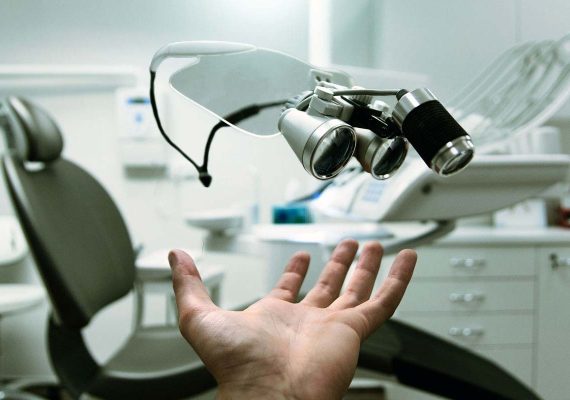Cataract can be treated with a laser (a very sophisticated form of light emitter) that is able to do a blade’s work just with light. This laser can be understood as an expansion of the surgeon’s capabilities not taking away his expertise and ultimate control. It simply replaces the surgical blade with an advanced instrument that is gentler on your eye and more precise. The laser undertakes some steps of the cataract procedure adding precision and predictability to the surgery that can’t even be matched by the most skilled surgeon’s hand.
Learn About Refractive Errors And Laser Vision Correction
- What Are The Causes Of Focusing Problems?
- What Are The Life-style Benefits Of Laser Vision Correction?
- Do You Qualify For Laser Vision Correction?
- What Is HD-LASIK 2.0 (Advanced High Definition 2.0 version) Treatment?
- What is the procedure of doing HD-LASIK 2.0?
- Instructions and precautions after HD-LASIK 2.0 ?
- Risks And Side Effects Of LASIK
- Trans-PRK procedure
- QUESTIONS & ANSWERS


What Are The Causes Of Focusing Problems?
Focusing problems of the eye, which require correction by glasses or contact lenses, are called refractive errors.
These are:
• Myopia, also called shortsightedness or nearsightedness
• Hypermetropia (hyperopia) also called or longsightedness or farsightedness
• Astigmatism – those using cylindrical correction in their glasses
What Are The Life-style Benefits Of Laser Vision Correction?
HD-LASIK Eye Surgery offers multiple benefits to most people with refractive errors:
- Clear vision without the hassles and inconvenience of corrective lenses – no more fears about being incapacitated in an emergency if lenses are lost or glasses are broken
- Expanded career opportunities (police officers, firefighters, pilots, air hostesses and professional athletes).
- Better vision for recreational sports, especially water, winter and contact sports
- Wider scope of peripheral vision than what glasses provide
- May be safer for eye health than wearing contact lenses for an extended period of time.
- New visual freedom for all aspects of life
Do You Qualify For Laser Vision Correction?
To qualify for laser vision correction, you should
- Be at least 18 years of age
- Have had stable vision for the past one year (slight prescription changes may not disqualify you.)
- Have corneas of adequate thickness as measured by corneal pachymetry and normal shape (determined by corneal topography).
- Be free from systemic illnesses, collagen vascular disorders such as rheumatoid arthritis, sjögrens syndrome, systemic lupus erythematosus, etc.
- Not be pregnant or nursing
- Be off contact lenses for 1-3 weeks prior to the surgery (this varies with the type of contact lens – soft or semi-soft).
- Your expectations from lasik should be realistic. Patients with un-realistic expectations generally have low levels of satisfaction. Detailed patient counseling is important in this regard
What Is HD-LASIK 2.0 (Advanced High Definition 2.0 version) Treatment?
HD-LASIK 2.0
HD-LASIK 2.0 treatment is the most advanced form of laser vision correction, beyond Contoura vision or SMILE, which further enhances the precision of excimer laser surgery.
iDESIGN 2.0
iDESIGN 2.0 measures Corneal aberrations and internal aberrations of whole eye by wavefront technology. This technology is latest and most advanced way to calculate refractive errors and also correct all measured aberrations. It is beyond Contoura vision, as Contoura vision calculates only corneal aberrations and not internal aberrations of eye.
This is based on the fact that the human eye suffers not only from sphero-cylindrical errors, which can be corrected with glasses or contact lenses, but also from numerous, minute optical imperfections or aberrations, other than sphero-cylindrical refractive errors, which are not correctable with glasses or contact lenses.
HD-LASIK 2.0 vs SMILE Procedure
HD-LASIK 2.0 is also better then SMILE procedure because, SMILE vision correction can not use Wavefront based data for correction. The quality of vision after HD-LASIK 2.0 is much better than SMILE procedure.
What is the procedure of doing HD-LASIK 2.0?
In performing HD-LASIK treatment, iDESIGN 2.0 studio is used to calculate refraction along with corneal and internal aberrations of the eye by wavefront. The data is transferred to excimer laser machine.
The eye surgeon first uses a keratome or Femto laser to make a flap on the front surface of the cornea,
The patient is then positioned under the excimer laser, which is programmed to vaporize some of the internal corneal tissue under the flap. After lifting the flap , the laser is applied to remove the selected tissue. The flap is then replaced in its position. The whole procedure takes 5-7 minutes in each eye.
Instructions and Precautions after HD-LASIK 2.0 ?
The vision may be blurry for the first few hours after procedure but it gradually improves. Few patients may have a mild discomfort in the first two hours after the laser procedure. However, this is easily relieved by pain-killing medication.
Patients are encouraged to rest for a day after the HD-LASIK. The precautions, which need to be taken, are to avoid rubbing and squeezing the eyes. Avoid splashing water on the face or directly into the eyes. Instillation of eye drops would start immediately after the laser and will continue for approximately two weeks.
Most patients have functional vision and can resume normal activities and work within a few days. In HD-LASIK 2.0, good vision is attained in 2-3 days. You will need follow up examinations on next day after the procedure, and after the 1 week.
Risks And Side Effects Of LASIK
As with any eye surgical procedure, HD-LASIK procedure has some possible risks and side effects that must be taken into account. A specific end result cannot be guaranteed, although it can be closely predicted based on data from thousands of previous cases. Side effects are usually minimal following Lasik surgery.
During the first few days after lasik surgery, most people can expect to experience at least some of these effects:
• Increased sensitivity to light or glare.
• Gritty and burning sensation in the eyes
• Slightly drier eyes
• Decreased visual clarity in dim light
In most cases, these effects decrease and eventually disappear as the eye heals. Occasionally, some side effects may persist.
Serious complications are fortunately very rare. Some of these include infection, wrinkles in the flap, epithelial in growth and increased or decreased response to correction. These complications are treatable with medication or further enhancement procedure.
Trans-PRK procedure
Trans PRK is a procedure which is advised for selected patients who have thin cornea . In this procedure corneal flap is not made. the Laser is directly applied on corneal surface in 2 stages. In stage 1 the epithelium is ablated / removed . In 2nd stage the stromal ablation is done, as calculated by iDESIGN 2.0. After procedure a contact lens is applied for 3 days for epithelium to recover.
This procedure is safer in patients who have thin corneas.
Patient experience pain , watering , irritation and blurred vision for few days.
In the Trans PRK procedure although the visual outcome is the same as that of LASIK, recovery of good vision takes 8-10 days. Your eye surgeon will be your best judge to decide which procedure you should undergo.
QUESTIONS & ANSWERS
A. Literature has shown that LASIK is an extremely safe procedure and sight-threatening complications are rare. Patients normally prefer to have both eyes treated at one sitting and get back to work faster. This practice is followed worldwide. However if the patient feels more comfortable getting only one eye treated at each session, this can be done without any additional cost to the patient.
A. The laser is set so as to reshape your cornea to eliminate your number completely. However during the healing process the eyes of each person may heal slightly differently. Thus it is possible that you may have a small residual number. Usually this does not make it necessary for you to wear glasses for routine work.
A. The correction of vision done by LASIK is permanent. However LASIK has no effect on the natural progression of your number. This is why we only perform LASIK in patients whose number has been stable for at least one year.
A. If the objectives of visual correction are not met with in the first surgery, a second, or enhancement procedure can usually be performed to provide additional correction. Most people do not require additional surgery, but the higher the amount of correction necessary, the greater is the possibility of needing an enhancement procedure. The surgeon and the patient together assess this need and make the decision about further surgery.
A. After LASIK surgery you will be able to see all distant objects clearly. Since LASIK cannot arrest the normal aging process of the body, you may require glasses for reading at around 40-45 years. Sometimes it may be possible to correct one eye for distance and the other eye for near vision if you so desire. This is called monovision.
A. LASIK will only correct the refractive power of the eye so as to focus the image on the retina without need of glasses. However there are other associations and possible future risks in a myope like higher chances of retinal detachment, glaucoma ,cataract, etc. LASIK does not change the risk of such problems in future.
Therefore patient should always mention the past history of LASIK during future eye check-ups. Because it’s difficult for ophthalmologists to detect the past occurrence of LASIK if it is not looked for. It is important that patient should get regular eye checkup with special emphasis on retina and glaucoma.
Schedule Your Eye Care Appointment
Submitting your appointment request is the initial step towards personalized and timely eye care.
Our team will contact you within 24 hours to confirm your appointment. For immediate assistance, please call us directly.

